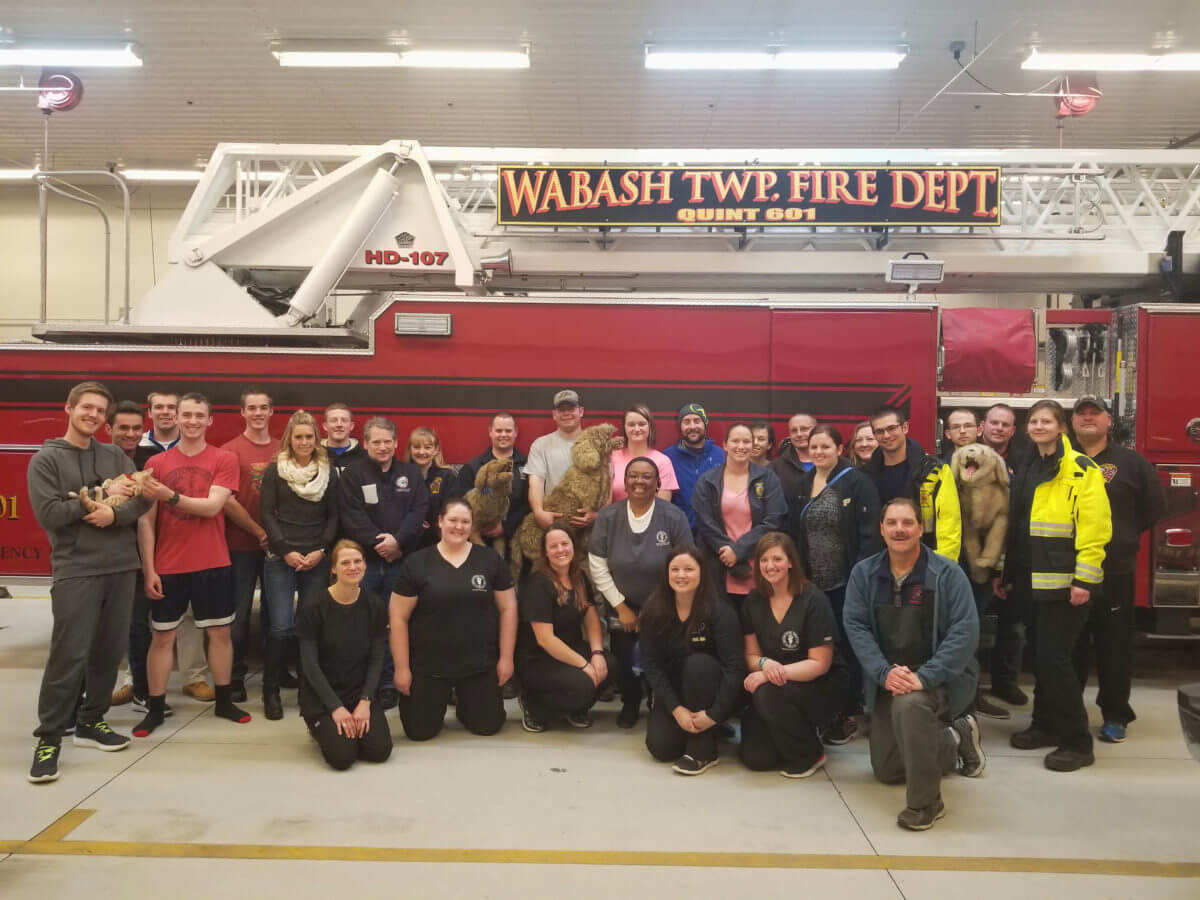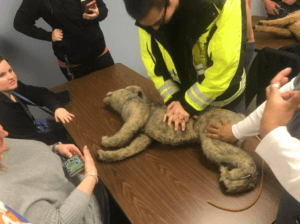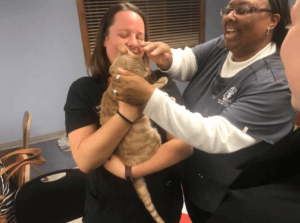
The Wabash Township Fire Department in West Lafayette completed pet CPR training thanks to Dr. Paula Johnson, Purdue Veterinary Medicine clinical assistant professor of small animal emergency and critical care, and fellow members of the Purdue University Veterinary Teaching Hospital Emergency and Critical Care (ECC) Team. The training for first responders covered CPR and basic life support techniques, including performing chest compressions and the administration of oxygen, as well as other techniques related to saving the lives of pets rescued from a fire.

Wabash Township Fire Department personnel learn how to perform chest compressions on a dog.
The presence of pets in a family home does affect the firefighter’s mission. According to the American Veterinary Medical Association (AVMA), about 80 percent of pet owners will make an effort to save their family pet in the event of a house fire, and over 500,000 pets a year are injured or displaced in residential fires. Instead of fleeing, cats and dogs typically hide in a fire, which complicates rescue efforts.

Tami Lind, ICU/ECC technologist supervisor, and Dr. Paula Johnson demonstrate how to do a basic examination on a feline patient.
“This training sets benchmarks for first responders on how best to interact with pets in an emergency situation,” said Dr. Johnson. “They are on-site responding to the needs of these families, and many of these families have pets who require emergency medical treatment after a fire. We want to give their pets the best chance of making it to the veterinary hospital for further treatment and evaluation in an emergency.” (Photos courtesy of the Wabash Township Fire Department)
